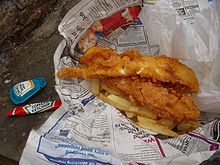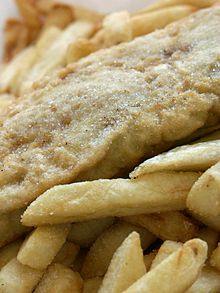Call Us:01784 461131 Visit Us:75 High Street
|
Cheap Takeaway Fast Food Insurance - Cafe Insurance - Coffee Bar
|
Public Liability Insurance |
Contents Insurance |
Stock Insurance |
|---|---|---|
| Product Liability Insurance | Fixtures & Fittings |
Glass Insurance |
| Employers Liability Insurance | Frozen Food Insurance |
Signs & Blinds |
| Goods in Transit Insurance | Loss of Money Insurance | Business Interruption |
Examples of why Insurance is necessary
Public Liability Insurance for customers that may slip or trip up in your shop
Employers Liability Insurance for staff who may sustain an injury whilst working
Product Liability Insurance in case of food contamination
Frozen Food Insurance in case food is spoilt if freezer breaks down
Loss of Business Insurance in case your shop burns down or is flooded
Glass, Signs & Blinds Insurance covers you against storm or vandals
Goods in Transit Insurance carriage of goods in own vehicle from suppliers
Fittings & Fixtures Insurance for damage caused by fire
Stock & Contents Insurance loss by fire Flood or burglary
Insurance is necessary to protect you from financial loss caused by insured perils
Pizza Parlours Insurance/Fish & Chip Shop Insurance/Kebab Shop Insurance/Takeaways
Quote Me Cheaper Car Insurance
Cheap Takeaway Insurance/cheap Fast Food Insurance/CheapChinese Takeaway Insurance
Cheap chip shop insurance / cheap chippy insurance / cheap fish and chip shop insurance
Burger Bar Insurance/ Chicken & Chips Takeaway Insurance/ Kebab Shop Insurance
Fish and chips
.Fish and chips is a popular take-away food that originated in the United Kingdom in 1858 or 1863.[1] It typically consists of battered (or sometimes breadcrumbed) fish (traditionally cod or in Australia, flake, but sometimes haddock or plaice), which is deep-fried and accompanied by deep-fried 'slab-cut' chips.
Popular tradition associates the dish with the United Kingdom and Ireland. The dish remains very popular in the UK and in areas colonised by British people in the mid 19th century, when the dish originated, such as Australia, New Zealand and Canada. The United States has more recently developed it as a staple derived from Canadian and Irish expatriates, but the dish is not considered common outside Lent. It has been popular in the Faroe Islands since the 1940s, when it was introduced during the British occupation of the Islands during World War II.
History
British Fish and Chip (Cuisine)
Fish and chip Shops became popular with the stock meal among the working classes in Great Britain as a consequence of the rapid development of trawl fishing in the North Sea, and development of railways connecting ports to cities during the second half of the 19th century.[2] In 1860, the first fish and chip shop was opened in London by Jewish proprietor Joseph Malin.[3]
Deep-fried chips (slices or pieces of potato) as a dish may have first appeared in Britain in about the same period: the Oxford English Dictionary notes as its earliest usage of "chips" in this sense the mention in Dickens' A Tale of Two Cities (published in 1859): "Husky chips of potatoes, fried with some reluctant drops of oil". (Note that Belgian tradition, as recorded in a manuscript of 1781, dates the frying of potatoes carved into the shape of fish back at least as far as 1680.)[4]
The modern fish and chip shop ("chippy" or "chipper" in modern British slang[5][6]) originated in the United Kingdom, although outlets selling fried food occurred commonly throughout Europe. According to one story, fried-potato shops spreading south from Scotland merged with fried-fish shops spreading from southern England.[citation needed] Early fish and chip shops had only very basic facilities. Usually these consisted principally of a large cauldron of cooking-fat, heated by a coal fire. During World War II fish and chips remained one of the few foods in the United Kingdom not subject to rationing.[7]
In the United Kingdom and Ireland, the Fish Labelling Regulations 2003[8] enact directive 2065/2001/EC and generally means that "fish" must be sold with the particular species named; so "cod and chips", not "fish and chips". The Food Standards Agency guidance excludes caterers from this;[9] but several local Trading Standards authorities and others do say it cannot be sold merely as "fish and chips".[10][11][12]
England
The dish became popular in wider circles in London and South East England in the middle of the 19th century (Charles Dickens mentions a "fried fish warehouse" in Oliver Twist, first published in 1838), while in the north of England a trade in deep-fried chipped potatoes developed. The first chip shop stood on the present site of Oldham's Tommyfield Market.[13] It remains unclear exactly when and where these two trades combined to become the fish-and-chip shop industry we know today[update]. Joseph Malin opened the first recorded combined fish-and-chip shop in London in 1860 or in 1865, while a Mr Lees pioneered the concept in the North of England in Mossley, Greater Manchester in 1863.[14]
The concept of a fish restaurant was introduced by Samuel Isaacs (born 1856 in Whitechapel London; died 1939 in Brighton, Sussex) who ran a thriving wholesale and retail fish business throughout London and the South of England in the latter part of the 19th century. Isaacs' first restaurant opened in London in 1896 serving fish and chips, bread and butter, and tea for nine pence,[15] and its popularity ensured a rapid expansion of the chain.
The restaurants were carpeted, had waited service, table cloths, flowers, china and cutlery, and made the trappings of upmarket dining affordable to the working classes for the first time. They were located in Tottenham Court Road, St. Pancras, The Strand, Hoxton, Shoreditch, Brixton and other London districts, as well as Clacton, Brighton, Ramsgate, Margate and other seaside resorts in southern England. Menus were expanded in the early 20th century to include meat dishes and other variations as their popularity grew to a total of thirty restaurants. Sam Isaacs' trademark was the phrase "This is the Plaice" combined with a picture of the punned-upon fish in question. A glimpse of the old Brighton restaurant at No.1 Marine Parade can be seen in the background of Norman Wisdom's 1955 film One Good Turn just as Norman/Pitkin runs onto the seafront. Coincidentally, this is now the site of a Harry Ramsden's fish and chips restaurant.

 Fish and chips traditionally wrapped in newspaper.
Fish and chips traditionally wrapped in newspaper.
Dundee City Council claims that "...in the 1870s, that glory of British gastronomy - the chip - was first sold by Belgian immigrant Edward De Gernier in the city’s Greenmarket."In Edinburgh, a combination of Gold Star brown sauce and water or malt vinegar, known either simply as "sauce", or more specifically as "chippy sauce", has great popularity.
Thickness
British chips are usually significantly thicker than the American-style French fries sold by major multinational fast food chains, resulting in a lower fat content per portion. In their homes or in non-chain restaurants, people in or from the United States may eat a thick type of chip, more similar to the British variant, called "home fries" or "steak fries".
Cooking fat penetrates a relatively shallow depth into the potato during cooking, thus the surface area reflects the fat content proportionally. Chips have a smaller surface area per unit weight than French fries and thus absorb less oil per weight of potato. Chips also require a somewhat longer cooking time than fries.
Batter
UK chippies traditionally use a simple water and flour batter, adding a little sodium bicarbonate (baking soda) and a little vinegar to create lightness, as they create bubbles in the batter. Other recipes may use beer or milk batter, where these liquids are often substitutes for water. The carbon dioxide in the beer lends a lighter texture to the batter. Beer also results in an orange-brown colour. A simple beer batter might consist of a 2:3 ratio of flour to beer by volume. The type of beer makes the batter taste different: some prefer lager[20][21] whereas others use stout or bitter. In all cases, the alcohol itself is cooked off, so little or none remains in the finished product.
Choice of fish
In Britain and Ireland, cod and haddock appear most commonly as the fish used for fish and chips,[22] but vendors also sell many other kinds of fish, especially other white fish, such as pollock or coley; plaice; skate and ray (particularly popular in Ireland); and huss or rock salmon (a term covering several species of dogfish and similar fish). In Northern Ireland, cod, plaice or whiting appear most commonly in 'fish suppers' - 'supper' being Northern Irish chip-shop slang for a food item accompanied by chips. Suppliers in Devon and Cornwall regularly offer pollock and coley as cheap alternatives to haddock due to their regular availability in a common catch. As a cheap, nutritious, savoury and common alternative to a whole piece of fish, fish-and-chips shops around the UK supply small battered rissoles of compressed cod roe.
Australians prefer reef-cod (a different variety from that used in the United Kingdom), barramundi or flake, a type of shark meat, in their fish and chips. In recent years, farmed basa imported from Vietnam has also become common in Australian fish and chip shops.
In New Zealand, at first, snapper was the preferred species for battered fillets in the North Island, but as catches for this fish declined, it was replaced by hoki, shark (marketed as lemon fish), and tarakihi. Gurnard and blue cod predominate in South Island fish and chips.
In the United States, the type of fish used depends on availability in a given region. Some common types are cod, halibut, flounder, tilapia or, in New England, Atlantic cod. Salmon is growing common on the West Coast, while freshwater catfish is most commonly used in the Southeast.
In Australia and New Zealand, seasoned salt or chicken salt is often sprinkled over fish and chips just before serving. This enhances the flavour. Many customers now choose to salt food themselves, given current public health concerns about salt intake. Another popular condiment is tomato sauce. This is similar to ketchup, but sweeter and less astringent. Tartar sauce is also very popular for the fish. Both tomato and tartar sauce are usually sold in small plastic tubs on the shop counter. Complementary slices of lemon are generally served with the dish or takeout pack. In the best British and Irish tradition, malt vinegar is often the condiment of choice of many Australasian fish and chip lovers.
In Canada, fish and chips may be served with the traditional salt and vinegar, but a lemon wedge and tartar sauce is often the accompaniment found in table service restaurants. Coleslaw of both the vinegared or creamy variety is often interchangeably served as a side.
In the United States, most restaurants serve fish and chips with tartar sauce.
Vendors
In the United Kingdom, Australia, New Zealand and North America, fish and chips usually sell through independent restaurants and take-aways. Outlets range from small affairs to chain restaurants. Locally-owned seafood restaurants are also popular in many local markets. Mobile "chip vans" serve to cater for temporary occasions.[25] In the United Kingdom, punning names for the shops, such as "The Batter Plaice", "Assault and Battery", "The Codfather", and "The Frying Scotsman" often occur. In countries such as New Zealand and Australia, fish-and-chip vendors are a popular business and source of income among the Asian community, particularly the Chinese migrants.[26]
Fish and chips is a common lunch meal eaten by families travelling to seaside resorts for day trips, who do not bring their own picnic meals.
Fish-and-chip outlets sell roughly 25% of all the white fish consumed in the United Kingdom, and 10% of all potatoes.
The existence of numerous competitions and awards for "best fish-and-chip shop"[27][28] testifies to the recognised status of this type of outlet in popular culture.[29]
Fish-and-chip shops traditionally wrapped their product in an inner layer of white paper (for hygiene) and an outer layer of newspaper or blank newsprint (for insulation and to absorb grease), though nowadays[update] the use of newspaper has largely ceased on grounds of hygiene, and establishments often use food-quality wrapping paper instead, which is occasionally printed on the outside to emulate newspaper. Fish and chip meals once came wrapped solely with a couple of layers of newspaper, but concerns over ink poisoning (especially relating to the use of lead type in newspaper production) meant the phasing out of this practice. Printing industry workers, however, state modern newspaper inks pose no such health risk.[30]
Fish-and-chip shops typically offer other hot fast food, which customers may eat in place of the traditional battered fish.
The British National Federation of Fish Friers was founded in 1913. It promotes fish and chips and offers training courses.
A previous world record for the "largest serving of fish and chips" held by an US restaurant was broken by Yorkshire pub Wensleydale


